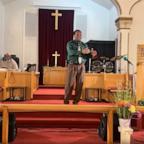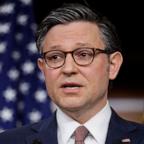Antidepressant Use in U.S. Has Almost Doubled
Aug. 4 -- MONDAY, Aug. 3 (HealthDay News) -- Antidepressant use among U.S. residents almost doubled between 1996 and 2005, along with a concurrent rise in the use of other psychotropic medications, a new report shows.
The increase seemed to span virtually all demographic groups.
"Over 10 percent of people over the age of 6 were receiving anti-depression medication. That strikes me as significant," said study author Dr. Mark Olfson, a professor of clinical psychiatry at Columbia University/New York State Psychiatric Institute in New York City.
According to background information in the study, antidepressants are now the most widely prescribed class of drugs in the United States. The expansion in use dates back to the 1980s, with the introduction of the antidepressant Prozac (fluoxetine).
The study found that 5.84 percent of U.S. residents aged 6 and over were using antidepressants in 1996, compared with 10.12 percent in 2005. That's 13.3 million people, up to 27 million people.
"This is a 20-year trend and it's very powerful," remarked Dr. Eric Caine, chair of the department of psychiatry and co-director of the Center for the Study of Prevention of Suicide at the University of Rochester Medical Center.
This happened despite a "black box" warning mandated for many antidepressant medications by the U.S. Food and Drug Administration in 2004, the study authors noted.
Lower rates of increases in antidepressant use were seen in blacks (3.61 percent in 1996 versus 4.51 percent in 2005) and in Hispanics (3.72 percent versus 5.21 percent in 2005), the researchers found.
Still, about the same number of people were being treated for depression (26.25 percent in 1996 versus 26.85 percent in 2005), indicating that the drugs were being used to treat other diagnoses, such as anxiety and other mood disorders.
At the same time, those receiving antipsychotic medications increased from 5.46 percent to 8.86 percent, and the proportion of people using psychotherapy dropped from 31.5 percent to 19.87 percent.




